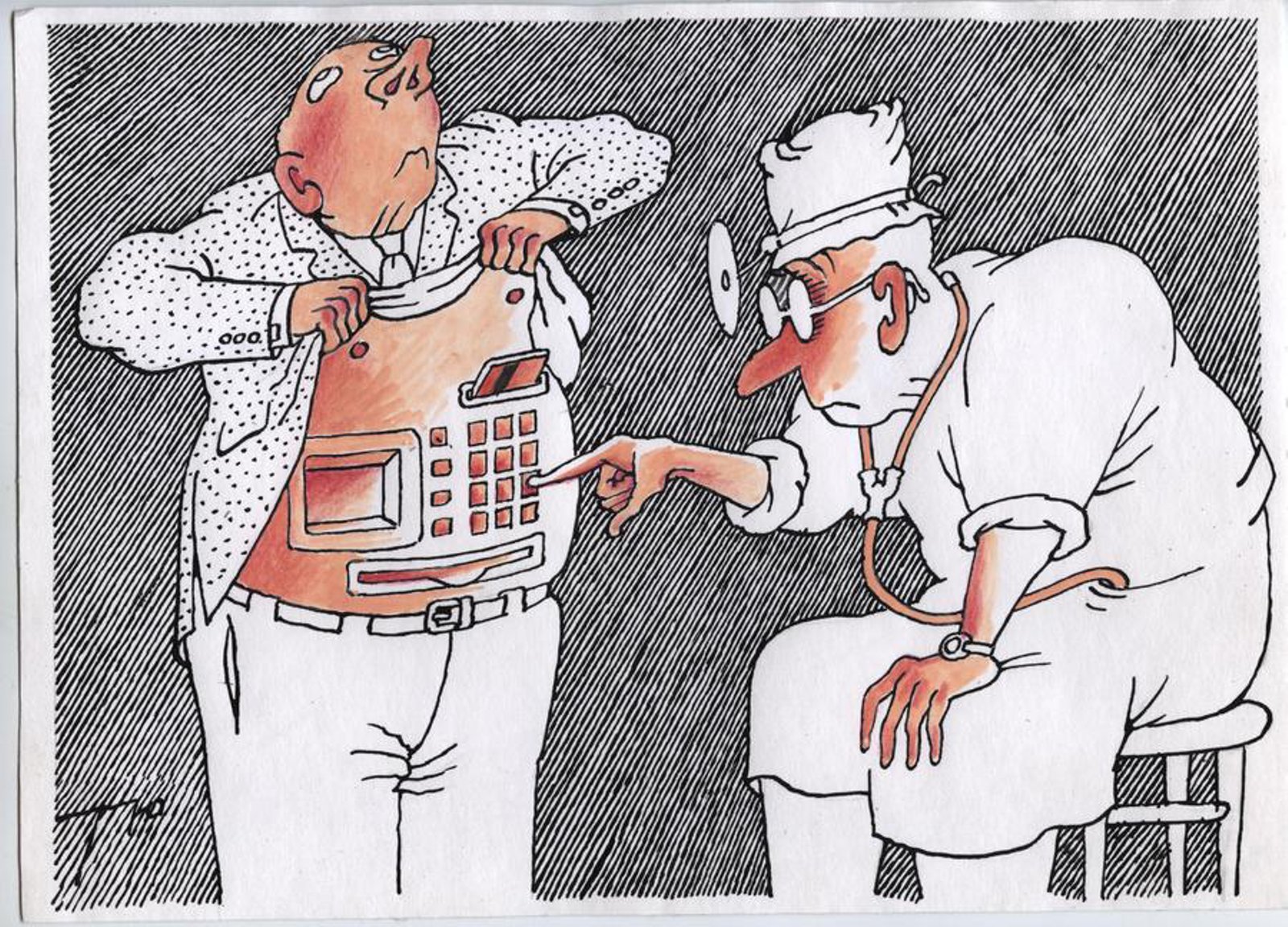The Ministry of Health annually reports on the successful implementation of reforms in healthcare, but the unresolved problems hindering the development of the healthcare system are not reduced.Every year, on August 18, medical workers of Tajikistan celebrate their professional holiday – the Day of the Medic.
Asia-Plus has collected five main problems in Tajik medicine that force doctors to flee the country and residents to seek help in neighboring countries.
1. Unworthy wage is, perhaps, one of the main problems in Tajik medicine. Doctors' salaries have been the lowest for many years, not only in the country, but also in Central Asia.
According to the Ministry of Labor, taking into account the July increase in wages, doctors today receive a little more than 1,500 somoni ($136), and even less in the regions, and this is only an average indicator.
The problem of meager salaries of domestic doctors is complemented by the lack of housing conditions and at least partial benefits.
Basically, it is difficult for young specialists. Their salaries are not enough to provide for the family.
The lack of decent earnings forces doctors to look for alternative ways to earn income, they do not have enough time for patients and self-development, which, of course, affects the quality of their work.
2. In recent years, Tajik media have been full of reports about mass departures of medical workers for labor migration, especially from the regions of the republic, where there is already an acute shortage of them.
These data were confirmed by the Minister of Health of the Republic Jamoliddin Abdullozoda. In the last six months 70 doctors and 343 nurses have left the healthcare sector of Tajikistan and gone into labor migration. By the way, this is much less than last year's figure.
In general, according to the Minister, at the moment Tajikistan lacks 2,298 doctors and 575 nurses.
3. From year to year, the amount of budget spending on the healthcare sector is increasing. So, in 2020, 1.8 billion somoni were allocated to this area, in 2021 - a little more than 2.3 billion somoni, in 2022 – more than 2.8 billion somoni. According to the approved budget, in 2023 this amount increased by 500 million.
However, taking into account inflation and the depreciation of money, the increase in spending on this industry is only a nominal indicator.
Tajikistan, among all the states of the former Soviet Union, has one of the lowest indicators of state financing of the healthcare system - only 69 dollars per capita. By the way, this is even less than the amount allocated for the costs of the healthcare system in Afghanistan.
Despite the fact that the Ministry of Health annually reports on the successful implementation of reforms in healthcare, this area remains underfunded and actually privatized.
Over the past few years, the healthcare budget has barely stretched by 1.8 - 2 percent of GDP (the lowest figure in the CIS), while most of the funds are spent on salaries of medical staff. Accordingly, everything related to treatment is covered by the population itself.
Due to low funding, doctors' offices are not equipped with the appropriate equipment, there are no consumables, necessary drugs and medicines. Creating normal working conditions for yourself, including the repair of offices, remains a headache for the doctors themselves.
Doctors remain one of the unprotected segments of the population. Gratitude in the form of a monetary reward from the patient may threaten the doctor with an official offense.
Insufficient financing of the healthcare sector has long turned this area into one of the most corrupt.
In addition, Tajikistan still lacks a program of mandatory free medical care and insurance coverage for the poorest and most vulnerable segments of the population, as well as for all other categories of the population.
4. Another, no less acute problem in Tajik medicine remains excessive bureaucracy and additional workload of doctors. In addition to their direct duties - to treat people, doctors are busy with daily reporting, constant inspections and public workload.
And this is not counting the fact that other duties are imposed on the family doctor: personal responsibility for the patient, night shifts, and during the pandemic, also immunoprophylactic measures, phone calls and apartment-by-apartment rounds.
In contrast to the excessive workload of doctors, the activity of nurses, on the contrary, is quite limited. If abroad, for example, they represent a real driving force, then here nurses are mainly engaged in filling out paperwork and other routine work.
5. In Tajikistan, people have long ceased to trust domestic medicine. There are only a few doctors who periodically improve their knowledge and skills, and there are none in the regions at all.
A doctor, especially a young one, does not have enough own funds for training programs abroad, and in order to knock them out at the expense of the state, you need to go through what is called "all the circles of hell".
And, as a result, the lack of professionalism leads to medical errors, the price of which is sometimes human life. This year alone, the media mentioned five egregious cases of people dying due to medical incompetence and negligence.
So, it turns out that people are willing to pay more and travel to other countries, just to get quality service and competent treatment.
After the opening of the land borders, Uzbekistan is considered one of the most relevant directions today. Those wishing to visit Tashkent clinics to receive high-tech medical care are growing every year.
This is confirmed by the statistics of the State Statistics Committee of the neighboring republic. So, over the past year, more than 35 thousand Tajiks visited Uzbekistan for treatment, and this is more than half of the total list of all countries.
According to residents of Khujand, for whom it is not difficult to get to Tashkent, Tajik doctors cannot even diagnose the disease, not to mention the treatment method. Also, while undergoing treatment in a neighboring country, you have to retake all the tests again, because they do not inspire confidence.







